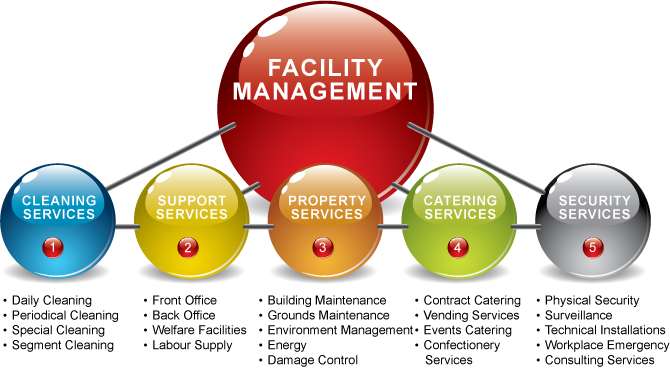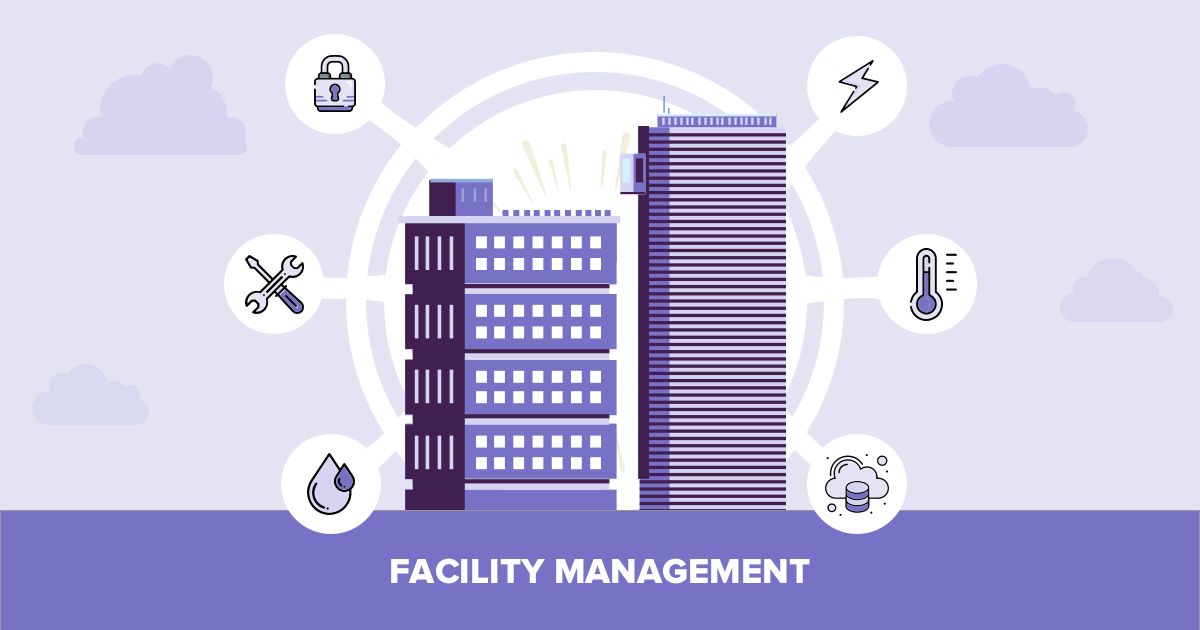Why Facility Management is Vital for Possession Durability
Why Facility Management is Vital for Possession Durability
Blog Article
The Essential Guide to Facility Monitoring: Strategies for Success
Center administration plays a vital role in the general success of an organization, serving as the foundation that supports effectiveness, productivity, and security. The nuances of reliable center management extend beyond simple logistics and require an extensive understanding of both quantitative and qualitative metrics.
Understanding Facility Administration
What makes up reliable facility monitoring? Effective facility management incorporates the sychronisation of different business features to guarantee that built settings are secure, reliable, and favorable to performance. It incorporates the concepts of business, design, and architecture management to create a seamless functional circulation within an organization.
Key components of center management consist of area preparation, maintenance management, and compliance with wellness and safety regulations. Space preparation concentrates on enhancing using physical sources to sustain organizational goals, while maintenance management makes certain that facilities are kept in ideal condition, making best use of life-span and reducing functional costs. Conformity with lawful and regulatory standards is essential, as it safeguards the company versus potential obligations and improves its reputation.
In addition, effective facility management relies upon the critical use of innovation, such as Building Management Systems (BMS) and Computer-Aided Center Administration (CAFM) devices. These modern technologies facilitate real-time surveillance of structure systems and streamline maintenance processes (Facility Management). Inevitably, a comprehensive technique to center administration not just promotes operational efficiency but additionally promotes a favorable setting for workers and visitors alike, driving overall business success

Secret Approaches for Optimization
Optimizing facility management requires a calculated approach that lines up functional exercise with organizational goals. To achieve this, the first crucial approach is the application of incorporated technological solutions. Making use of sophisticated software systems enables real-time monitoring of facility procedures, facilitating data-driven decision-making and boosting total performance.
Secondly, normal assessments of center efficiency are crucial. Conducting regular inspections and audits enables center supervisors to determine areas that require improvement, making certain that resources are allocated successfully. This positive approach assists in lessening downtime and enhancing service distribution.
Another essential approach is promoting collaboration throughout divisions. By urging open interaction in between groups, center supervisors can much better align their methods with business objectives, leading to improved operational harmony. In addition, involving staff in training programs promotes a culture of liability and improves their capacity to add to optimization efforts.
Enhancing Safety And Security Protocols
Reinforcing safety and security protocols is important for creating a protected atmosphere within facilities. An extensive safety and security protocol not only protects site visitors and workers but likewise boosts operational efficiency. Facility Management. To accomplish this, center managers have to perform regular risk analyses to make certain and determine potential hazards that appropriate actions remain in area

Additionally, clear interaction networks must be established to report safety and security issues immediately. This includes developing an easily accessible system for employees to voice prospective hazards or events without concern of . Leveraging modern technology can enhance safety and security steps; for instance, executing security systems and access controls aids monitor center activities and limit unapproved entry.
Last but not least, conformity with regional regulations and sector standards is non-negotiable. Regular audits and testimonials of safety methods guarantee positioning with present laws and best methods. By focusing on these strategies, facility managers can cultivate a society of safety and security that secures all stakeholders and eventually adds to the company's success.
Improving Work Environment Environment
A favorable workplace environment substantially improves worker spirits and productivity, making it a critical emphasis for facility monitoring. To create such an environment, center supervisors must prioritize a number of crucial elements, consisting of comfort designs, looks, and employee engagement.
Ergonomic factors to consider are vital to minimize physical stress and pain. This involves providing flexible furniture, correct lighting, and ample space for motion. These adjustments can cause decreased absenteeism and increased job complete satisfaction.
Looks play a crucial duty fit the workplace ambience. Making use of shade psychology, natural lighting, and greenery can cultivate a promoting and inviting environment. Attentively created spaces can boost creativity and improve total well-being.
Additionally, urging worker interaction with inclusive decision-making processes can enhance the feeling of ownership and belonging. Gathering comments on office improvements and including employees in the design process can bring about a much more tailored websites environment that satisfies their demands.
Last but not least, advertising well-being campaigns, such as wellness programs and relaxation rooms, can even more contribute to an encouraging office society. By focusing on these methods, facility supervisors can successfully boost the workplace atmosphere, driving both employee complete satisfaction and business success.
Gauging Success in Facilities
Gauging success in facility management calls for an extensive method that reviews both qualitative and quantitative metrics. Measurable metrics commonly consist of crucial efficiency signs (KPIs) such as space application rates, power intake, maintenance prices, and occupancy levels. pop over to this site These metrics give a clear picture of operational effectiveness and economic performance, enabling facility supervisors to determine areas for improvement and criteria versus industry standards.
Qualitative metrics, on the other hand, emphasis on customer contentment and staff member interaction. Studies and responses mechanisms can assess exactly how well the centers fulfill the requirements of owners, aiding to evaluate the overall office environment. This element is critical, as a satisfied labor force is typically linked to enhanced performance and retention prices.
To effectively gauge success, facility supervisors need to additionally think about incorporating innovation, such as developing monitoring systems and data analytics devices, to gather and examine appropriate data. On a regular basis assessing both collections of metrics enables a more well balanced view of efficiency and educates critical decisions. Eventually, an effective center administration technique rests on a dedication to continual enhancement, ensuring that both operational performances and customer satisfaction are focused on.

Conclusion
In final thought, reliable facility administration is crucial for improving organizational performance. By executing integrated technological options, performing regular analyses, and promoting partnership across divisions, companies can accomplish optimum resource allowance and functional performance. Prioritizing security protocols and boosting office atmospheres better add to enhanced worker fulfillment. Ultimately, gauging success via both qualitative and quantitative metrics permits continual improvement, inevitably bring about minimized operational costs and a more productive business environment.
Center administration plays an essential function in the total success of next page an organization, offering as the backbone that supports productivity, security, and performance.Key aspects of facility administration consist of space planning, maintenance administration, and compliance with health and safety and security guidelines.Furthermore, reliable facility monitoring depends on the critical usage of technology, such as Structure Administration Systems (BMS) and Computer-Aided Center Administration (CAFM) devices. Ultimately, a comprehensive approach to center management not only advertises operational efficiency however additionally fosters a favorable atmosphere for workers and site visitors alike, driving general organizational success.
Ultimately, an effective center management approach hinges on a commitment to continuous renovation, guaranteeing that both functional effectiveness and customer complete satisfaction are focused on.
Report this page